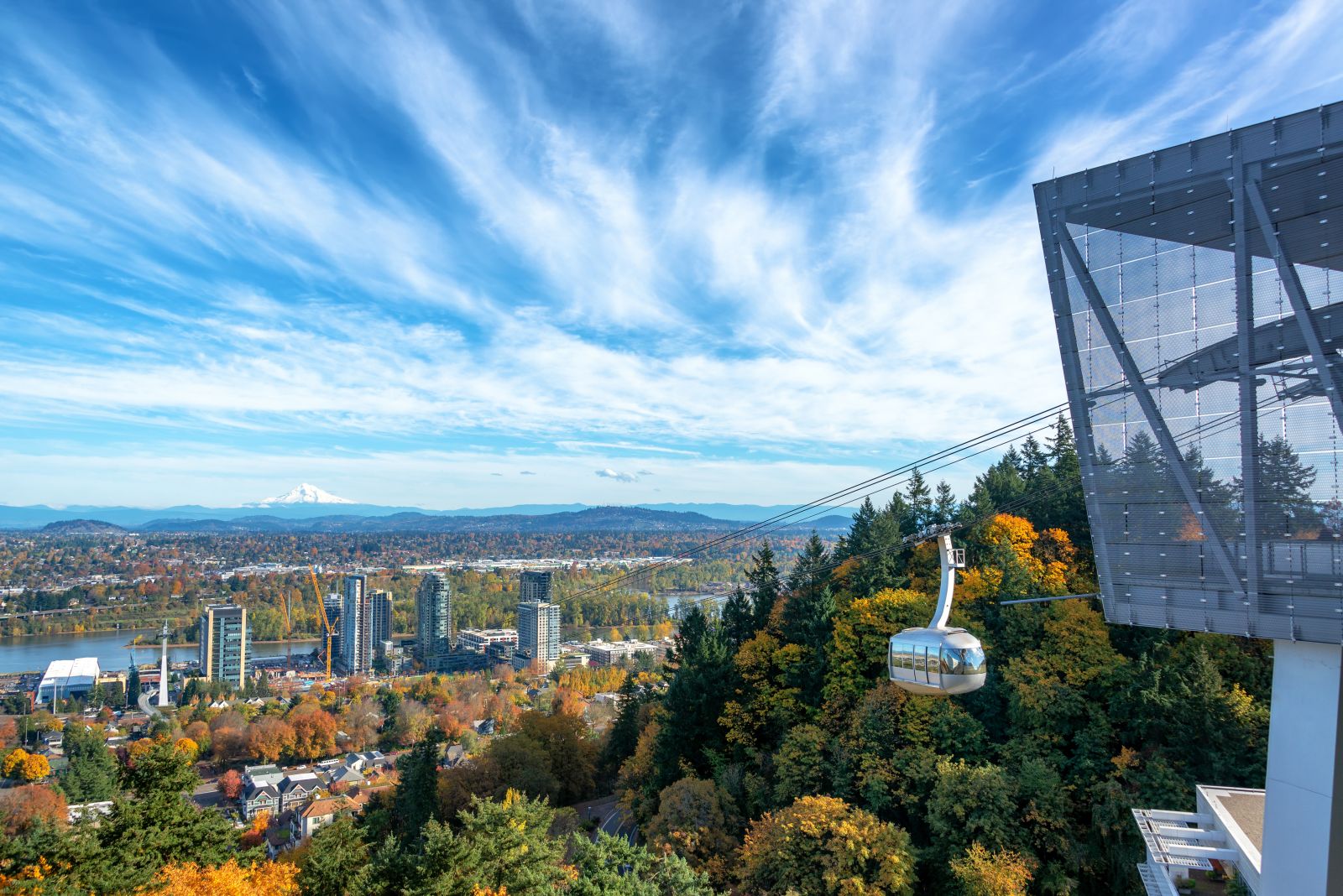Diversity Retention Project
Experiences in the Community
While data from the Workforce Diversity Retention Project shows that organizations and their leaders still have a lot to do to change their workplace culture, survey respondents cited their experiences in the local community as the primary source of dissatisfaction. This section takes a closer look at some of the concerns and challenges that professionals of color face while living in an area with a history of Black exclusionary laws and White supremacy structure.
Most of the participants said that their professional lives were tolerable, but difficulties in finding close social connections made their personal lives not enjoyable. Relatedly, they said the lack of spaces and events for building these connections and a lack of cultural resources in the community posed a barrier to creating meaningful relationships.
“I FEEL BAMBOOZLED”
The underlying barrier identified by many participants is the perception that Portland, Oregon, is a progressive and liberal place. There was a strong sentiment that people in the region consider themselves to have egalitarian self-concepts, yet engage in behaviors that disenfranchise or alienate people of color. People refer to this phenomenon as “Portland nice.” Many who move to the area described the discrepancy between perception and reality as “shocking.”
What is “Portland nice?” It is the smiles you see in stores and restaurants, the way drivers let you into the lane, the let’s-get-along attitude, and the general politeness of the area. When it comes to race, however, it is all a veneer that prevents people from acknowledging or recognizing racist practices, because doing so wouldn’t be “polite.” People may also assume that, as Portland residents, they cannot possibly engage in racist behaviors because they consider themselves to be progressive, thus curtailing true efforts at self-reflection and change.
LACK OF COMMUNITY POSES CHALLENGE FOR MANY
Only one percent felt included in the community, while 97 percent reported some form of discrimination in their community. The following quotes highlights the collective feelings of many survey participants:
Another concern was the inability to complete basic life necessities. Respondents commonly expressed dismay at the lack of culturally-competent barbershops, salons, restaurants/bars, grocery stores, dance events (e.g., hip-hop, salsa), and other activities that typically contribute to a sense of community and belonging in other areas. The difficulties in finding close social connections also yielded to concerns about dating and finding partners who they can settled down with and stay, as well as concerns about raising children in the region.
One participant summed up why that matters to employers. “As a Black woman, it is impossible to live here. It is almost impossible to date here. It seems like a personal issue, but it becomes a professional one. I can’t socialize with my coworkers or even want to stay at my job when I have no personal life… it affects retention drastically.”

Reported some form of discrimination in their community

Agreed or strongly agreed that they felt included in their community

Agreed or strongly agreed they felt comfortable in restaurants, stores & public places

Felt that people consider themselves to be more tolerant that they actually are
A CHICKEN-OR-EGG SITUATION
The Workforce Diversity Retention Project revealed that a lack social and cultural connections prompted many professionals of color to leave the area. Researchers at Martinez Organizational Consulting suggested this is somewhat of a "chicken-or-egg" problem such that low presentation of people of color makes it difficult to find and recruit more in the region.
When it comes to creating a welcoming environment for people of color, employers need to think holistically and not just in the silo of a workplace. Organizations can partner with local groups to help provide outside avenues for employees to make meaningful social connections and invest in community resources.
Below are some solutions that address the issues of community connections and support for individual people of color.
COMMUNITY SOLUTIONS
Download documents:
Community solution sheet (pdf) | Individual solution sheet (pdf) | Full solution sheets (pdf)
COMMUNITY SUPPORT AND NETWORKING
- Provide employees with information and access to culturally-specific organizations and resources (at on-boarding and beyond).
This includes social and professional opportunities for employees of color to gather outside of work. Companies need to also invest in these activities and organizations. - Not all employers have employee resource groups (ERGs).
Find ways to collaborate with other employers or community groups. For example, companies with large employee resource groups can invite smaller employers to their social gatherings and events. Examples include Community Leadership Academies, Coalition of Communities of Color Bridges program, etc. - Create leadership development opportunities by supporting employees of color to join boards or committees in the community, and integrate this into their work.
This mutually benefits the employee, the employer and the community. - Support and sustain cultural opportunities in the workplace and community.
Annual heritage months (such as Black History Month, Asian American Pacific Islander Heritage Month, Hispanic Heritage Month, Native American History Month, etc.) are great, but people want recognition and activities throughout the year, not just one month out of the year. - Recognize employers for doing great diversity, equity, and inclusion work.
An example would be a community celebration or award ceremony. - Create opportunities to invest in the diverse local economy through partnerships.
This includes suppliers and contractors that support minority business groups (e.g., Oregon Association of Minority Entrepreneurs (OAME), Hispanic Metropolitan Chamber (HMC), etc.).
INDIVIDUAL SUPPORT AND ADVOCACY
- Understand Oregon and the Pacific Northwest’s history of racism.
Provide employees and potential employees with information about Oregon’s historical white supremacy structure and how it continues to impact our culture today. Knowledge of history will help current and new employees understand the significance of race and culture in the community and workplace, and hopefully inspire work to change it. - Advocate for improving the mental health infrastructure to serve the needs of communities of color.
This could include attracting professionals of color to careers in mental health professions. Address the stress of relocating to a non-diverse community. For example: incorporating culturally competent EAP service designed for employees of color. - Connect employees with culturally-specific organizations.
Creating a template or model for culturally relevant on-boarding that would include resources and best practices. Must be sensitive to the needs or interest of the new employee and family members. Provide resources for social engagement and culturally-specific services. Examples include: OHSU Center for Diversity and Inclusion’s Community Resource Guide, Travel Portland and Travel Oregon websites, and minority-focused newspapers. - Create formal mentor and sponsor programs for employees of color that recognize the dynamics of cultural differences between mentor and mentee.
- Design strategies that may be an umbrella to include smaller companies (members) that don’t have the resources to implement.
This may include employee resource groups and diversity, equity and inclusion training, etc. - Provide services for the “trailing spouse” (a person who follows their partner to another city because of work).
Help with job search, community connections, and events that focus on activities for new employees, partners and families. - Prepare a checklist for employers to use to achieve “a great place to work” status in using diversity, equity and inclusion standards.
- Train and provide each newcomer with an “onboarding mentor” to assist with the transition to the workplace and community.
Nike has developed this program. - Partners in Diversity or another organization could create a directory of member volunteers who offer to meet with job candidates who are curious about the experiences of others who have relocated to Oregon or southwest Washington.

